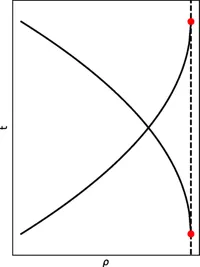Mechanical design and implementation of the BlackCAT payload
Mitchell Wages, Laurel ONeill, Abraham D. Falcone, Joseph M. Colosimo, et al.
SPIE,
2025
Abstract
The BlackCAT mission is a 6U CubeSat that will monitor the sky for X-ray transient events. This mission is scheduled to launch during the end of 2025 to the beginning of 2026. Final assembly, spacecraft-payload integration, and testing took place during Q1-Q2 2025. The BlackCAT payload is an X-ray coded aperture telescope consisting of a coded aperture mask, a focal plane array (FPA), a detector module (DM) and the Payload Interface Board (PIB). The PIB is an in-house designed electronics board that provides an interface between the payload and spacecraft bus while providing power and control to the payload. The DM acts as a housing unit for the payload, a mechanical interface to the spacecraft, and a shield from off-axis X-rays. The FPA is made of four 550 × 550-pixel Speedster-EXD X-ray hybrid CMOS detectors (HCDs). The coded aperture mask is a nickel mesh with a gold coating and has a random pattern of opened and closed cells, allowing ∼40% X-ray transmission. The mask and FPA have both thermal and mechanical requirements that must be met to function optimally. The 6U CubeSat form factor constrains volume and mass and drives design choices for the payload. We discuss mechanical design of the payload, as well as considerations for the assembly of the payload and integration into the satellite bus.
Cite (BibTeX)
@article{BlackCatMech,
author = "Mitchell Wages, Laurel ONeill, Abraham D. Falcone, Joseph M. Colosimo, et al.",
title = "{Mechanical design and implementation of the BlackCAT payload}",
volume = "13625",
booktitle = "UV, X-Ray, and Gamma-Ray Space Instrumentation for Astronomy XXIV",
editor = "Oswald H. Siegmund and Keri Hoadley",
organization = "International Society for Optics and Photonics",
publisher = "SPIE",
pages = "1362512",
keywords = "CubeSat, Hybrid CMOS, Structures, X-ray Transient Events, Mechanical Design, CubeSat Instruments",
year = "2025",
journal = "SPIE",
doi = "https://www.spiedigitallibrary.org/conference-proceedings-of-spie/13625/1362512/Mechanical-design-and-implementation-of-the-BlackCAT-payload/10.1117/12.3065710.short",
URL = "https://doi.org/10.1117/12.3065710"
}
